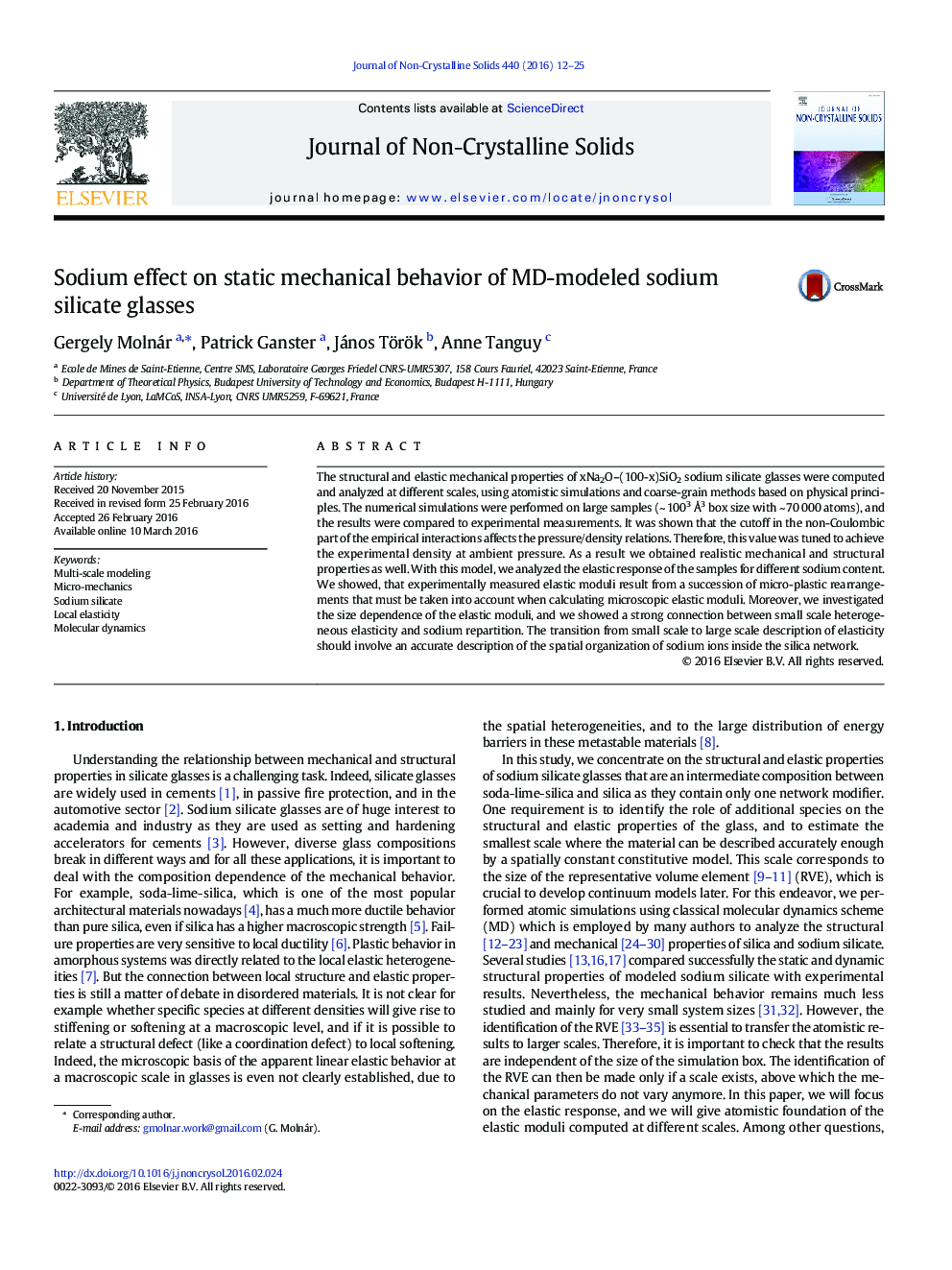| Article ID | Journal | Published Year | Pages | File Type |
|---|---|---|---|---|
| 1480240 | Journal of Non-Crystalline Solids | 2016 | 14 Pages |
•An MD based method is proposed to analyze microscopic elastic properties.•Different compositions of sodium silicate were tested elastically at different scales.•Experimentally measured elastic moduli result from the sum of micro-plastic events.•Strong correlation was found between sodium density and soft spots.
The structural and elastic mechanical properties of xNa2O–(100-x)SiO2 sodium silicate glasses were computed and analyzed at different scales, using atomistic simulations and coarse-grain methods based on physical principles. The numerical simulations were performed on large samples (~ 1003 Å3 box size with ~ 70 000 atoms), and the results were compared to experimental measurements. It was shown that the cutoff in the non-Coulombic part of the empirical interactions affects the pressure/density relations. Therefore, this value was tuned to achieve the experimental density at ambient pressure. As a result we obtained realistic mechanical and structural properties as well. With this model, we analyzed the elastic response of the samples for different sodium content. We showed, that experimentally measured elastic moduli result from a succession of micro-plastic rearrangements that must be taken into account when calculating microscopic elastic moduli. Moreover, we investigated the size dependence of the elastic moduli, and we showed a strong connection between small scale heterogeneous elasticity and sodium repartition. The transition from small scale to large scale description of elasticity should involve an accurate description of the spatial organization of sodium ions inside the silica network.
